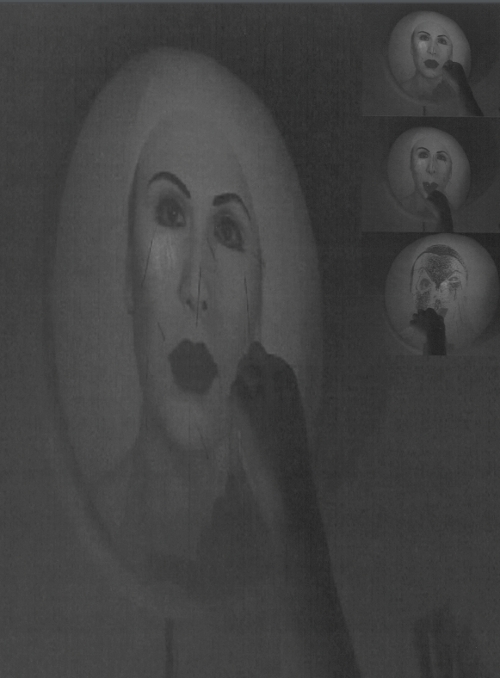.jpg)
The Shed is an immediately accessible exhibition curated by Sean Kelly and Jessica Ball. This show focuses on the activities that men get up to in their sheds and displays those obscure and eccentric objects that emerge at the end of obsessive days, weeks and months of solitary tinkering.
Gaston Bachelard equates such places with the recesses of the unconscious. They are the domain of those, as yet unformed ideas, unencumbered by analyses and the strictures of language. They are places of exploration where the forces of creativity are unleashed in an effort to make sense of consuming conundrums that busy the mind. Most importantly the space typified by the shed is a place of solitude and daydreams. Like the cellar it is "...the dark entity of the house, the one that partakes of subterranean forces. When we dream there, we are in harmony with the irrationality of the depths." (The Poetics of Space 1994)
For anyone visiting this exhibition the sentiments of Bachelard's 'dark entity' are immediately apparent. The exhibition is set in a confining black box, rather than the usual austere white. The result is an impressive staging reminiscent of the confined and gloomy spaces of domestic sheds and basements, those makeshift domains that are traditionally the refuge of men, but also women with fanatical and consuming projects.
For many who viewed this exhibition on opening night, it was Battle Fleet 2000/2001 by Adam Cuthbert, a cardboard model of an aircraft carrier and attendant destroyer that immediately dominated the show. Like many others, I was transported back to a time of marvel, when plastic Airfix kits of Lancaster bombers, Spitfires, and Messchesmitts, suspended from my bedroom ceiling, engaged in imaginary battle with a flotilla of the Ark Royal, the Bismark, and even the QE2 cruising the length of my window sill. Cuthbert has exploded the scale to one that is beyond the capacity of any boy's window sill. This huge cardboard aircraft carrier floats about half a meter from the ground and is bristling with detail. The deck is cluttered with World War II style twin-engined light bombers and fighter planes, some in readiness for takeoff, others in stowage with wings bent at the elbow. Closer inspection reveals that a number of the cockpits, and ships' stations are manned by small liquorice coloured plasticine men. This oversized cardboard model challenges our notions of sculpture by its sheer presence; it is of a scale that takes it from the world of plastic models and locates it clearly into the realm of sculptural objects.
Unlike the other sculptural pieces in this show Battle Fleet is neither nailed to the wall nor presented on a plinth; it is instead floating above the floor and as such is loaded with the power of implied movement.
On the opposite wall is Gregan Mannix's threefold play with the fetishistic allure of mantlepiece trinkets and cleaning products. In Preenly Black, Mannix, seems to invoke the spectre of race by juxtaposing three porcelain black cats with a well known stain remover that claims to remove 'tough persistent stains'. But for me it was Sharyn Woods' D.I.Y. that summarised this playful section of the show. This piece takes the form of one of those tool hanging boards, with nails and inked outlines to hang the right tool in the right place. Lit like a domestic shrine this exhibit responds with a hallowed glow. Woods has given these organising boards and the tools they frame a new dimension by replacing the usual dull but carefully designed handles with luminescent resin that swirls with rainbow colours, like oil on a wet road.
Through the arc of Fred Fisher's giant red tick, simply titled Tick, the character of the show shifts from the playful to the eccentric. Here we find a Device To Express the Problem of Detecting Cosmic Gravity Waves from sculptor Colin Langridge. This skeletal structure consists of two coopered frames, suspending a rectangular wooden trough each, from steel wire; the two components connected by coiled copper piping. This device resonates with musings of Leonardo da Vinci and attracts the same incomprehension that must have befallen the Renaissance master's design for a flying machine.
As if denying the speculation of Langridge's device is Shaun McGowan's Demographia, a study of population disbursement. This exhibit consists of small wax figures, measuring no more than a couple of inches each. Identical in form but multiple in complexion they march down the black wall hand in hand in tight formation, like a swarm of well-drilled drones along a still steaming bitumen road. There is also Greg Bourke's Test Vehicles, a trio of carpet crawling prototypes, Ross Dalwood's De Stijl-inspired working foam saw, and fine contributions from Johnnie Arnold, Andy Jones, and Leigh Burnett.












